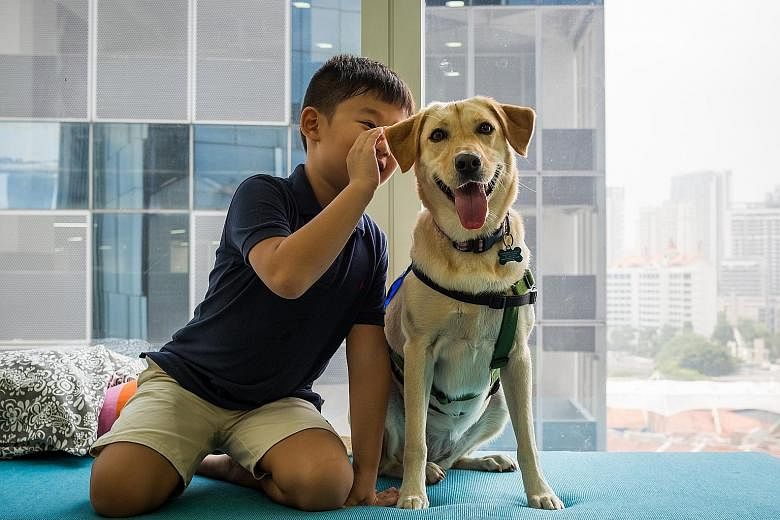Pets make us happy and can help to reduce our stress and anxiety.
This is why they are increasingly being employed to bring love, warmth and comfort to those in need of some tender loving care.
Some pet owners take their animals to visit children, senior folks and patients in hospitals or hospices for them to touch the animals or play and talk to them.
These sessions are usually conducted with dogs, though cats and horses have also been used.
The organisations involved here include Therapy Dogs Singapore, SOSD's Healing Paws and Cat-Assisted Therapy Singapore.
Some research has shown that animals can help to reduce stress and anxiety in people.
What is less known is the fact that animals can also be used in therapy sessions to help patients achieve a certain goal. This is called animal-assisted therapy.
Most of the pet therapy that we read about or hear of is known as animal-assisted activities. They include:
PAT A DOG
Animal-assisted activities are casual meet-and-greet sessions where handlers and their dogs or cats visit patients in a hospital or nursing home.
There is no specific goal in such encounters, said Ms Joanna Yao, a senior clinical psychologist at the Institute of Mental Health, which has held animal-assisted activities for its long-stay patients since 2006.
"As animals do not hold preconceived notions of people and accept them for who they are, our patients can engage wholeheartedly and interact with them without fear of being evaluated or judged negatively," said Ms Yao.
"Pet-assisted activities encourage patients to have conversations with others, such as the dog handlers or their fellow patients. This can be helpful in promoting social interaction and improving social skills."
A furry, four-legged friend is the magic ingredient that can lower the level of cortisol, a hormone associated with stress. It triggers the release of endorphins, a feel-good neurotransmitter which gives a calming effect and boosts the level of serotonin, a chemical linked with happiness and well-being.
Furthermore, by directing one's attention towards another living thing, a patient's focus is drawn away from his own difficulties and, for a while, he forgets to fret about his own issues, she said.
DOGS AT WORK
Animal-or pet-assisted therapy, which involves using animals as a form of treatment, is relatively new here.
Ms Maureen Huang, the founder of Pawsibility, which offers animal-assisted therapy, said it is a facilitated interaction in which a person works with a professional towards attaining clinical goals.
"For example, we could be counselling a person with depression or anxiety, or helping a child with special needs develop social skills."
To offer this service, the therapist and the dog need to be trained.
Ms Huang's assistants are Telly, a labrador retriever, and Hope, a golden retriever.
"Dogs change the atmosphere of therapy sessions, helping people to feel more relaxed and less anxious," said Ms Huang, who has a master's degree in social work from the University of Denver.
She uses Telly and Hope to coax patients out of their shells. A child may choose to look at a dog, pat or even hug it while talking about difficult issues.
She added: "I work with a lot of children and young people who find it hard to talk to a counsellor whom they don't know. Dogs help to provide support when they are talking about something difficult."


